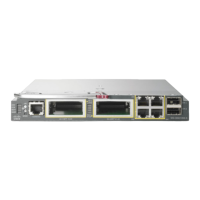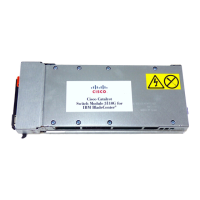36-2
Cisco Catalyst Blade Switch 3120 for HP Software Configuration Guide
OL-12247-01
Chapter 36 Configuring QoS
Understanding QoS
Understanding QoS
Typically, networks operate on a best-effort delivery basis, which means that all traffic has equal priority
and an equal chance of being delivered in a timely manner. When congestion occurs, all traffic has an
equal chance of being dropped.
When you configure the QoS feature, you can select specific network traffic, prioritize it according to
its relative importance, and use congestion-management and congestion-avoidance techniques to
provide preferential treatment. Implementing QoS in your network makes network performance more
predictable and bandwidth utilization more effective.
The QoS implementation is based on the Differentiated Services (Diff-Serv) architecture, an emerging
standard from the Internet Engineering Task Force (IETF). This architecture specifies that each packet
is classified upon entry into the network.
The classification is carried in the IP packet header, using 6 bits from the deprecated IP type of service
(ToS) field to carry the classification (class) information. Classification can also be carried in the
Layer 2 frame. These special bits in the Layer 2 frame or a Layer 3 packet are described here and shown
in Figure 36-1:
• Prioritization bits in Layer 2 frames:
Layer 2 Inter-Switch Link (ISL) frame headers have a 1-byte User field that carries an IEEE 802.1p
class of service (CoS) value in the three least-significant bits. On ports configured as Layer 2 ISL
trunks, all traffic is in ISL frames.
Layer 2 802.1Q frame headers have a 2-byte Tag Control Information field that carries the CoS value
in the three most-significant bits, which are called the User Priority bits. On ports configured as
Layer 2 802.1Q trunks, all traffic is in 802.1Q frames except for traffic in the native VLAN.
Other frame types cannot carry Layer 2 CoS values.
Layer 2 CoS values range from 0 for low priority to 7 for high priority.
• Prioritization bits in Layer 3 packets:
Layer 3 IP packets can carry either an IP precedence value or a Differentiated Services Code Point
(DSCP) value. QoS supports the use of either value because DSCP values are backward-compatible
with IP precedence values.
IP precedence values range from 0 to 7.
DSCP values range from 0 to 63.
Note IPv6 QoS is not supported in this release.

